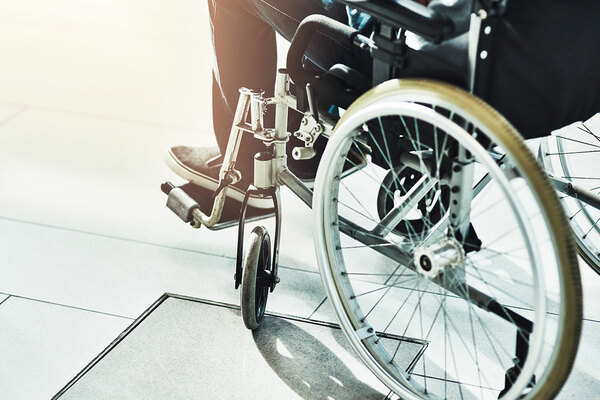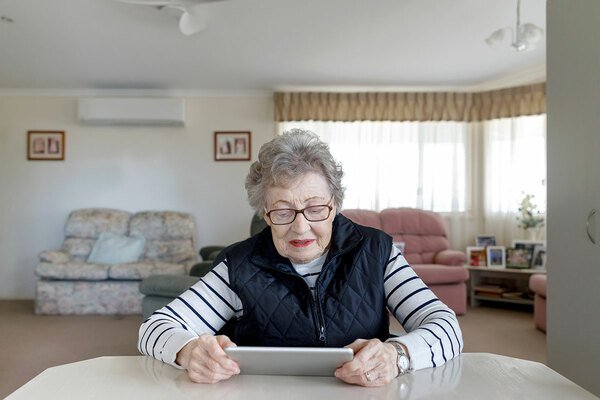You are viewing 1 of your 1 free articles

Lockdown is tough for wheelchair users like me. An accessible home can make all the difference
The requirement to shield during lockdown makes a properly accessible home even more important than ever for wheelchair users, writes Kerry Thompson
Right now we are spending more time at home than we have ever done before. Accessibility within the home is nothing less than a necessity when you’re a disabled person like me.
My independence at home is critical to my mental well-being. I think for disabled people who are shielding, especially wheelchair users, lockdown is a much more anxious endeavour: we are having to protect ourselves from anyone who knocks on our door, from supermarket couriers to the postman.
Other than my husband, I haven’t had physical contact with any one in over two months. The postmen and supermarket couriers usually leave my post or groceries on the doorstep, and if they do knock it’s my husband who speaks to them.
As a disabled person, I have to take extra precautions as I’m deemed more ‘vulnerable’ to coronavirus. I made posters that I’ve put on my front door to let the outside world know that I’m shielding.
It was nice that Habinteg, the housing association which I rent my home from, took inspiration from this and created posters to help other tenants around the country to let people know they’re taking stringent precautions to stay safe.
It is easy to forget about the many disabled people who are locked down in homes that are unsuitable for their needs. Many disabled people have no way of showering or even going to the toilet without support.
Now just imagine being restricted to a home like this 24/7 during lockdown (as well as the rest of your life after that).
With 13.9 million disabled people in the UK, plus a rapidly ageing population, it’s not right that only 7% of English homes currently provide even the most basic accessibility features.
“Many disabled people are making do without these simple features because there is such a huge shortage of accessible homes across the UK”
Accessibility requirements vary from one disabled person to another. For me, my home needs to offer wider doors and hallways to fit my wheelchair, a wet room and flat thresholds.
These may sound basic, but many disabled people are making do without these simple features because there is such a huge shortage of accessible homes across the UK. Some people’s homes are so restrictive that they can’t come and go as they please at the best of times, let alone during lockdown.
I’m one of the lucky ones to have an accessible home that suits my needs.
Having the appropriate housing can dramatically improve disabled people’s ability to live independently. People like me whose homes do meet their accessibility needs have reported improved health and mental well-being.
Having a home that’s accessible can also benefit the public purse, reducing social care costs for local authorities and health costs for the NHS.
Being in an inaccessible home is bad enough, but right now there are also the added stresses of shielding and having to find alternative care solutions.
I recently had a Zoom meeting with Habinteg’s insight group, which I am a part of. The meeting included 10 wheelchair users joining forces with Habinteg staff and tenants to discuss the effects lockdown and shielding are having on disabled people.
My friend, actress Sam Renke, mentioned how she had to send her carers home and move back into her mum’s inaccessible cottage in order to adequately shield from the virus. However, moving out of her accessible flat has meant she has had to sacrifice her independence – she can’t even make a cup of tea for herself, which is a huge deal for someone who likes to cook and entertain friends at home.
“Housing associations need to pay close attention to ensure their disabled tenants are well looked after and informed during these challenging times”
This really hit home for me. If I didn’t have my husband with me, would I need to move into a family member’s inaccessible home to keep myself safe?
I understand that older and disabled people are seen as ‘vulnerable’ during this crisis, but ‘vulnerable’ does not mean less important. Housing associations need to pay close attention to ensure their disabled tenants are well looked after and informed during these challenging times.
We are doing our best to protect ourselves from the virus, but please, when this is all over, remember that feeling of entrapment that so many people around the world are going through. Remember the feeling of not being able to leave your home.
And remember that is the norm for a lot of disabled people on a daily basis, with or without a pandemic. This crisis has really reminded disabled people across the country just how important access in the home is.
Kerry Thompson, tenant, Habinteg




